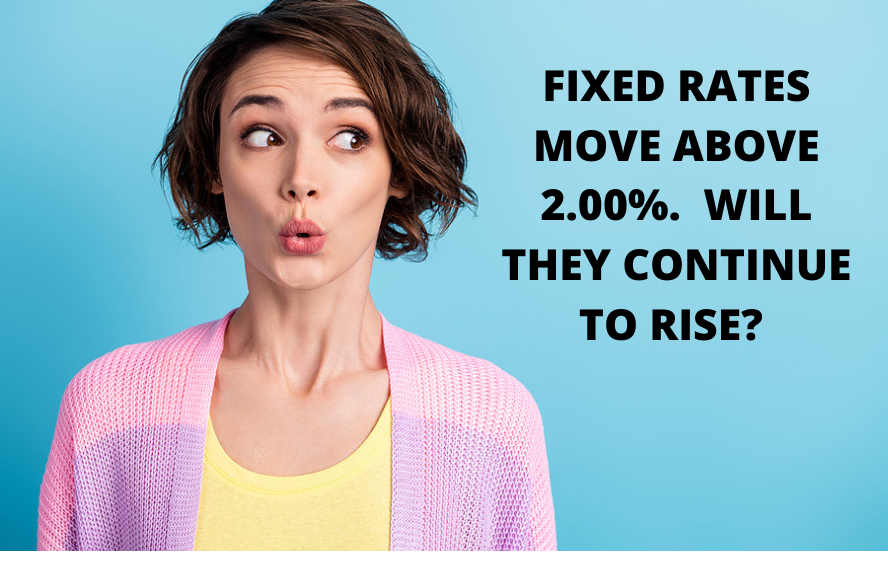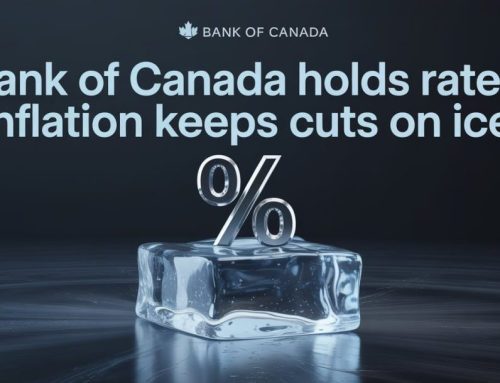5 year fixed mortgage rates have been on the rise since late September, and have now climbed up over 2%.
Should this surprise us?
The fact that fixed mortgage rates have now moved up over 2% is not surprising.
What is surprising is how quickly it has happened.
Why Are Fixed Mortgage Rates Increasing?
In late September, the US Federal Reserve announced that they would start tapering their quantitative easing programs earlier than expected. The market then reacted and bond yields started to spike. As fixed mortgage rates are heavily influenced by bond yields, immediate upward pressure was placed on them. Until this announcement, fixed mortgage rates were expected to remain stable.
It’s amazing how one piece of news can completely change expectations moving forward.
In the Bank of Canada’s October 27th rate announcement, they confirmed that they would be eliminating their quantitative easing completely. If the markets reacted from the US tapering their programs early, then it will definitely react when the BOC announces that they are eliminating them. This further fueled the bond yields resulting in additional fixed rate increases, some as recent as yesterday, November 2nd. You can follow the bond yields yourself.
The lowest 5 year fixed rate has now increased to 2.19% for an insured mortgage. This is a 0.55% increase from the 1.64% we had available until the end of September. Again, these rates are for insured mortgages only. Overall, 5 year fixed mortgages now range from 2.19% to 2.64% for owner occupied properties. For the reasoning on why there is such a large difference, I would recommend reading my blog on Why Different People Are Quoted Different Rates.
Will Fixed Mortgage Rates Continue To Rise?
The last time the bond yields were this high was around mid-January, 2020. The lowest insured 5 year fixed rate at the time was 2.69%, or 0.64% higher than where they are today.
Does this mean that the lowest rate is heading up to 2.69%?
If the bond yields remain at current levels, then this is possible. If they continue to trend upwards, then further increases would be expected, which would mean a 2.69% 5 year fixed rate is not only possible, but probable.
5 year fixed rates will move back up over 3%. This is something that was always expected. Just not this soon.
The question is, how long will it take for them to get there? Time will tell.
The Lowest Mortgage Rates In History
Until summer of 2020, we had never seen a 5 year fixed mortgage rate below 2%. In fact, the lowest rate ever offered prior to that was 2.14%. It took a pandemic to drive them below 2%. Unless there is a major turn of events, it’s possible that we may never see sub 2.00% 5 year fixed mortgage rates again.
Anything under 3% is still a great rate by historical standards, so today’s current fixed mortgage rates still fall into this category.
When mortgage rates remain at a ridiculously low level for an extended period, we tend to become complacent with them. When they start to rise, the new rates can sound expensive. Sure, they sound expensive when you compare them to the pandemic driven lows we’ve seen over the last 18 months, however they are still very low by historical standards.
If you currently have a mortgage and are concerned how mortgage rate increases will affect your affordability at renewal, then I would check out the following two of my recent blogs:
The Effect Of Mortgage Rate Increases At Renewal
How To Prepare For Higher Mortgage Rates
How Do These Increases Affect Variable Rate Mortgages?
Whenever we talk about rate increases, many tend to think that when fixed rates are moving, then variable rates are as well (and vice versa). The truth is that the two can move independently. At the moment, fixed rates are on the rise, but variable rates remain stable. In fact, some lenders have recently increased their discounts on variable rate mortgages even further.
The spread between fixed and variable is now wider than it has been in years, and has now above 1%, and in some cases, close to 1.50%.
While the Bank of Canada announced that they are expecting to increase their rate sooner than originally expected, the larger spread between fixed and variable rates can still make a variable rate mortgage a great choice.
We know the Bank of Canada will be increasing their rate multiple times over the next couple of years, but this doesn’t mean you should be automatically choosing a fixed rate. Especially now that they have increased.
For my detailed analysis on how the expected BOC increases will impact a variable rate mortgage, be sure to read my blog on last week’s BOC announcement where I go into detail.
If unsure on whether to choose fixed or variable, I would suggest checking out The Ultimate Guide On Choosing Fixed Vs. Variable.







